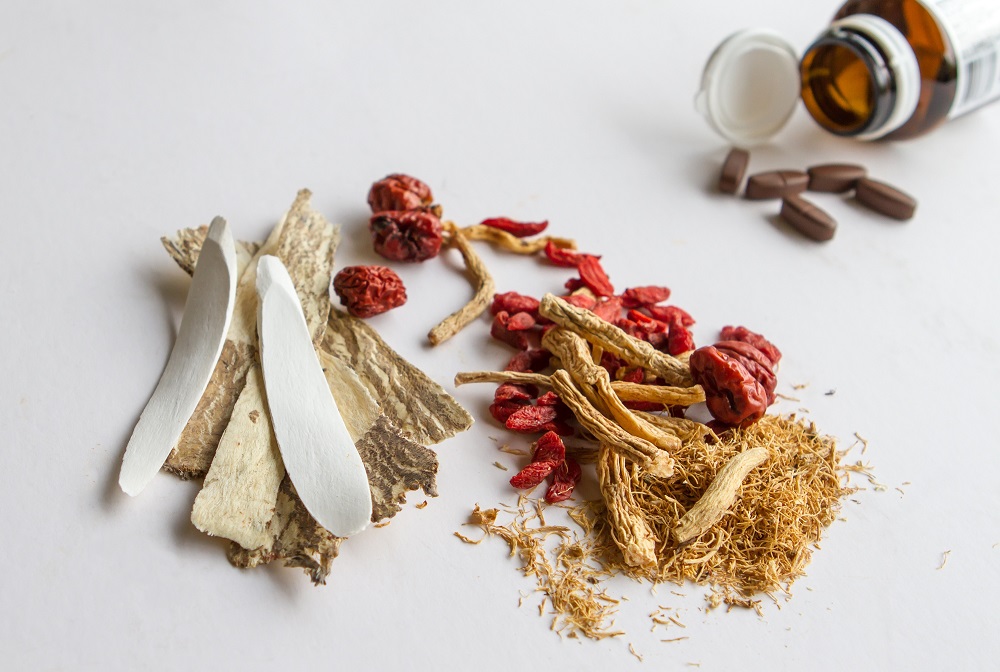Medicine has greatly evolved into the practice that it is today. However, having distinct origins and developments around the world, numerous schools of medicine have come about. Two prominent schools are present today with significant following: eastern and western medicine.
While disciplines in the same field, eastern and western medicine vary greatly from one another. Eastern and western medicine differ in their ways of diagnosing, treating, and preventing disease. Generally, eastern medicine approaches medicine in a holistic manner – assessing and interpreting a multitude of factors that encompass the body, spirit, and mind. Western medicine has primarily focused on a systematic approach of hypothetical deduction.
This article will provide a short primer on the histories of eastern and western medicine before discussing the primary differences in how these two schools of medicine are practiced.
History of Eastern Medicine

Eastern medicine has two main proponents in Asia: traditional Chinese medicine and the Ayurveda.
Traditional Chinese medicine has roots in historical texts such as the Yellow Emperor’s Inner Canon and the Treatise on Cold Damage – the former being believed by scholars to have been composed between the late Warring States period (475-221 BC) and the Han dynasty (206-220 CE) while the latter sometime before 220 CE.
The Ayurveda (school of medicine developed in the Indian subcontinent) has no unanimously agreed upon date of conception. While some scholars argue that the philosophies of the Ayurveda date back to the mid-first millennium BC, others claim that the Ayurveda originated in prehistoric times.
While the Ayurveda remained as a prominent medicinal system in the region, the influence of traditional Chinese medicine has spread to nearby countries such as Japan and Korea, where their own schools of medicine (e.g., Kampo in Japan, traditional Korean medicine, Koryo in North Korea) have been greatly influenced by traditional Chinese medicine.
Other forms of traditional medicine that have developed in Asia include jamu in Indonesia, sowa rigpa in Bhutan, amchi in Tibet, and dhihevi beys in the Maldives.
Recently, eastern medicine has achieved a milestone by having traditional Chinese medicine recognized by the World Health Organization (WHO). The WHO has historically published the “International Statistical Classification of Diseases and Related Health Problems” (ICD) which serves to identify global health trends, statistics, diseases, and health conditions. With the first version accepted in 1893, the publication tended to lean towards western medicine. However, the 11th version of the ICD published in 2019 included traditional Chinese medicine remedies for the first time.
History of Western Medicine

While many authors argue that the birth of western medicine began in the 19th-20th century (i.e., anesthesia in 1846, germ theory in 1861, medical imaging in 1895, penicillin in 1928, the establishment of the WHO in 1946, etc.), others claim that western medicine is rooted in ancient Greece, particularly from the teachings of Greek physician Hippocrates.
Hippocrates (touted as the father of Western medicine) was one of the earliest figures in medicine to have been credited with believing that diseases were caused by natural entities, not by superstitious ones. Separating religion from medicine, Hippocrates paved the way for what western medicine has become. Along with his school of disciples, Hippocrates contributed a great deal to modern medicine – all of which were recorded in the Hippocratic Corpus, a collection of around 70 works. To this day, western medicine physicians swear by the Hippocratic Oath.
After Hippocrates, many physicians also contributed to what western medicine is today. During the Renaissance, Paracelsus prescribed remedies derived from alchemy, particularly sulfur, mercury, and salt. In the 16th century, Girolamo Fracastoro hypothesized that some diseases propagated from sick people to healthy people. This hypothesis was one of many that served as precursors to the Germ Theory, the theory that some diseases are caused by microorganisms, and the science of epidemiology.
In the 18th century, physician and anatomist Giovanni Battista Morgagni suggested that as good health is a manifestation of anatomical integrity in the human body, disease is an alteration of what he observed to be considered anatomically typical (according to his hundreds of human dissections).
With more physicians, clinicians, physiologists, and anatomists contributing, the 20th century of western medicine has been hallmarked by significant advancements. With the aid of sophisticated technology, medicine has become more microscopic and molecular.
Eastern vs Western Medicine
Defined by the science and practice of diagnosing, treating, and preventing disease, medicine has evolved distinctly throughout the different parts of the world. While all cultures around the globe have their own brand of medicine, two dominant schools of thought have emerged: eastern and western medicine.
While still heavily prevalent across the world, eastern and western medicine many differences between them apart from their points of origin.
Diagnosis
The first difference between eastern and western medicine is their approach to diagnosis.
Eastern medicine is more holistic and believes that an illness should be diagnosed by examining the entire body – particularly the imbalances and disharmony in the person, instead of just the symptoms.
For example, traditional Chinese medicine looks at multiple factors called functional entities. These functional entities include the Five Fundamental Substances (i.e., qi or vital life force, blood, body fluids, essence, and spirit), Zang Fu (i.e., Zang organs such as the heart, spleen, lung, kidney, and liver; Fu organs such as the stomach, small intestine, large intestine, urinary bladder, gall bladder, and sanjiao), and the Meridians (i.e., channels through which the qi flows).
A more general perspective of traditional Chinese medicine diagnosis uses the Eight Principles. Using the Eight Principles as a framework, eastern medicine then measures whether a person has an excess or a deficiency of qi in (1) yin, (2) yang, (3) interior, (4) exterior, (5) heat, (6) cold, (7) deficiency, and (8) excess.
Similarly, Ayurvedic diagnosis follows suit by diagnosing the patient holistically, compared to simply focusing on the symptoms. Generally, an Ayurvedic diagnosis would include three main parts: inspection (a comprehensive examination of the body parts such as the skin, hair, eyes, and tongue), interrogation (the determination of the patient’s medical history, symptoms, and psychological characteristics), and palpation (the physical examination of the medical practitioner using their hands).
With the results of the diagnosis (trividha pariksha) and an in-depth knowledge of Ayurvedic concepts (e.g., “body humors” or dosha, body tissues or dhatu-s, excretory products or mala-s, digestive power or agni, and body channels or srota-s), the Ayurvedic physician can then prescribe the appropriate treatment (e.g., a specific herbal formula, yoga, etc.).
Western medicine approaches diagnosis primarily based on information gathering and the scientific method. Upon receiving an ill or ailing patient, the medical practitioner then proceeds to gather information through patient history, physical exam, assessment of signs and symptoms, and a battery of diagnostic tests. The doctor then evaluates and interprets all the evidence gathered to conclude a diagnosis.
After diagnosis, medical practitioners can then address the problem with the appropriate treatment. Just as the process of diagnosis varies greatly between eastern and western medicine, so does the treatment.
Treatment
Like diagnosis, eastern medicine treatments are more holistic in nature. Eastern medicine principles retain that treating a disease requires treating the whole body. Hence, treatments in eastern medicine are far more diverse than in western medicine.
In traditional Chinese medicine, treatments can include herbal medicine, acupuncture, cupping therapy, moxibustion (burning dried mugwort on certain points in the body), gua sha (skin scraping), massage, and dietary therapy. Treatments in traditional Chinese medicine generally aim to fix or improve the flow of qi in the body, which should subsequently treat the disease.

Similar to traditional Chinese medicine, the Ayurveda also has a wide variety of possible treatments. These include abhyanga (warm oil massage), shirodhara (a liquid is poured over the forehead), netra basti (the eyes are submerged in ghee), pinda sveda (massages with hot cotton bags filled with herbs), herbal baths, panchakarma (body cleansing), yoga, and meditation.
Treatments in western medicine often directly approach the disease and its symptoms. These are often drugs, radiation, or surgery.
Prevention
While society perceives medicine as a means to treat diseases, a primary goal of medicine is to prevent diseases from occuring.
In traditional Chinese medicine, disease prevention revolves around zhi wei bing (“preventive health planning”). Preventive methods in traditional Chinese medicine would include emotional adjustment, seasonal health care, dietary care, herbal therapy, acupuncture, massage, detoxification, foot baths, and more.
The Ayurveda describes preventive medicine in the swasthavritta, guidelines for people to remain healthy and fit. In this philosophy, preventive medicine in the Ayurveda relies on herbs, yoga, and meditation.
Another aspect in the Ayurveda that can be considered as preventive medicine would be the rasayana, an Ayurvedic discipline that recommends herbs, herb-mineral formulations, diet, lifestyle, and even social etiquette to achieve balance in life, prevent disease, and lengthen lifespans.
While the WHO included Traditional Chinese Medicine, it also notes that the goal is to "share evidence-based information." However, Herbalists like Dr. Nicole Apelian do exist where-in and they do share their own findings. For example Dr. Apelian's book, The Lost Book of Remedies discusses the use of herbal remedies and holistic wellness advice.
Western medicine follows some aspects of eastern medicine such that preventive medicine heavily involves diet and exercise. However, western medicine departs with the use of vaccines, maintenance drugs, etc..
Final Thoughts
While heavily distinct, eastern and western medicine are both functional to the field. Some scholars claim that integrative medicine, the combination of both eastern and western medicine practices, should be further encouraged to modern physicians since ignoring one school of medicine denies it of its merits. While western medicine is the dominant school of thought in the modern world, significant parts of the world still heavily rely on eastern medicine practices – especially places without access to modern medicine.
References:

